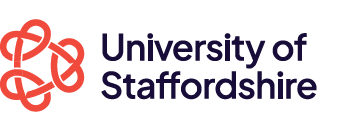19 September 2025
By Kathryn Mitchell

Ever felt like the skeleton sitting at the computer, after hours of rewriting the same sentence? Writer’s block is something almost everyone experiences at some point, whether you are a student working on an assignment or a member of staff writing a research paper. In Higher Education, writing is central to how we demonstrate learning and share knowledge, which makes it even more frustrating when the words simply do not flow (Campbell, 2019). I have faced this challenge myself, and over time I have found that various approaches can make the process not only easier but also more rewarding.
What follows is a set of practical strategies that I have used personally and encouraged others to try. While not every method will work for everyone, they are flexible enough to apply to anyone currently writing in Higher Education.
1. Talk it through
One of the most effective ways I overcome writer’s block is by talking about my ideas. This was technique recommended by my research mentor who said ‘If you can talk about it, you can write about it’. This works best in two directions: with someone like-minded, who understands where you are coming from, and with someone who will challenge your perspective. It is not always easy to welcome criticism, but when it is framed positively, it opens the door to new ways of thinking and strengthens the final piece of writing. Being out of your comfort zone will help you to grow.
2. Mind mapping with keywords
When your ideas feel dry, creating a visual mind map using keywords can help. I often start by writing a single word in the centre of a page and then branching out to associated words and phrases. Before long, patterns and themes begin to emerge that can later be shaped into a clear argument or structure. This is particularly useful for both academic assignments and research projects where complex topics need breaking down into manageable parts. There are some great tools if you’d prefer to do this digitally, including Canva’s Free Online Whiteboard Tool and Microsoft’s OneNote.

3. Revisit your guidance
Sometimes the block comes from losing sight of the task itself. I remind myself to go back to the original guidance: this could be an assessment brief, a research plan, or my own writing objectives. Regularly checking back helps me stay aligned with what is being asked and prevents me from drifting too far in one direction. Once you have consolidated your guidance, you could try the PEEL method. This approach can reduce the risk of missing associated requirements, while keeping writing focused on its intended goals.
4. Read, read, read
When the words are not coming, read and reflect on what others have written (Dahl, Vasset and Frilund, 2023). Engaging with existing literature not only helps spark ideas but also reassures me that I am part of an ongoing conversation rather than starting from scratch. For students, this might mean reviewing journal articles or textbooks connected to the topic. For research writers, it could be exploring recent research in the chosen field. Either way, reading widely is a powerful antidote to the blank page.
Final thought
Writer’s block is not a sign of failure, but a natural part of the writing process. By talking ideas through, mapping them visually, revisiting guidance, and reading widely, we can create momentum that breaks through the barrier. The important thing is to experiment and find which methods work best for you.
I hope these practical approaches provide a useful starting point for those writing in the Higher Education environment.
#HigherEducation #WritingTechniques #AcademicWriting
Reference list
Campbell, M. (2019) Teaching Academic Writing in Higher Education, Ssrn.com. Available at: https://ssrn.com/abstract=3457352.
Canva (2025) Canva, Canva. Available at: https://www.canva.com/.
Creative Writing Ink (2023) How to Challenge Yourself as a Writer Creative Writing Ink, Creative Writing Ink». Available at: https://creativewritingink.co.uk/how-to-challenge-yourself-as-a-writer/ (Accessed: 16 September 2025).
Dahl, B.M., Vasset, F. and Frilund, M. (2023) ‘Students’ Approaches to Scientific Essay Writing as an Educational Method in Higher education: a Mixed Methods Study’, Social Sciences & Humanities Open, 7(1), p. 100389. Available at: https://doi.org/10.1016/j.ssaho.2022.100389.
Microsoft (no date) Introducing OneNote, support.microsoft.com. Available at: https://support.microsoft.com/en-gb/office/introducing-onenote-38be036d-5b5a-49ad-83be-292fe53ad7b3.
University of Staffordshire (2024) Library: Academic writing: PEEL Paragraphs, Staffs.ac.uk. Available at: https://libguides.staffs.ac.uk/academic_writing/PEEL.

